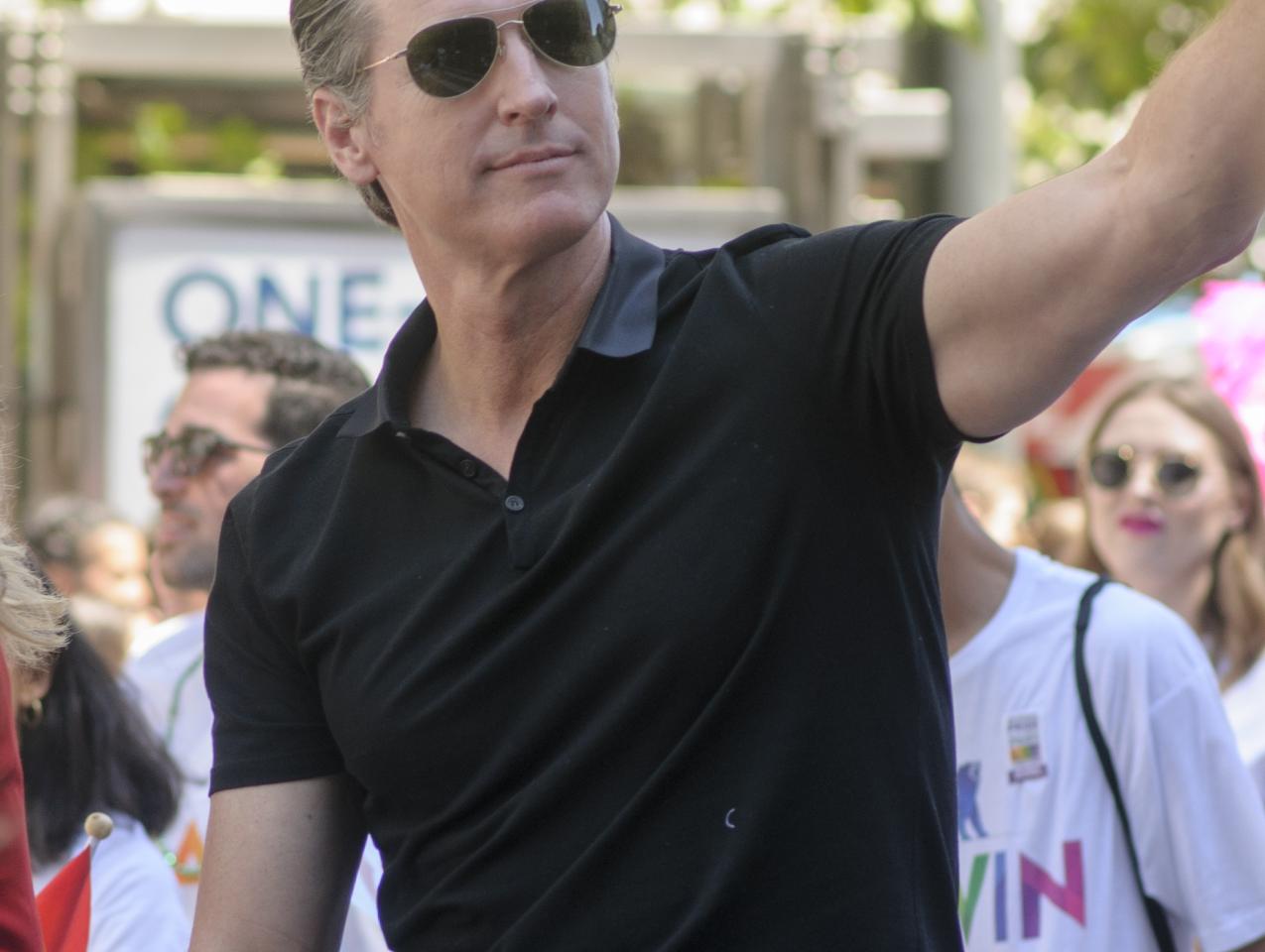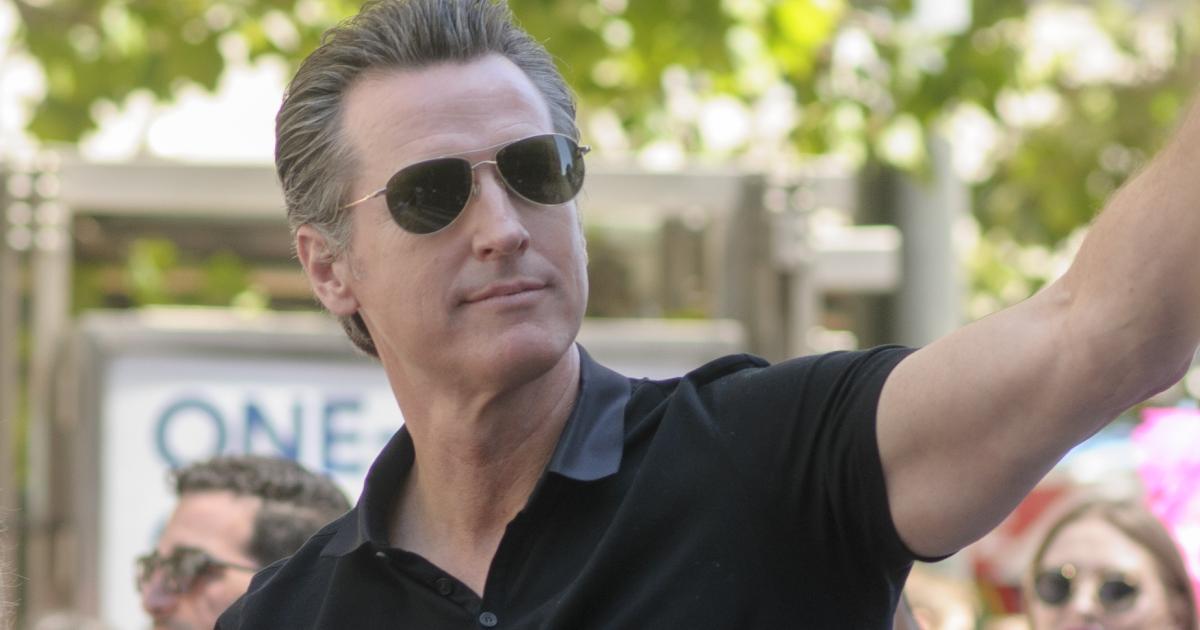- State & Local
- California
One thing that’s been a constant in Gavin Newsom’s rise to power: consistent inconsistency.
Keep in mind: before he was elected governor of the Golden State, Newsom served two terms as California’s lieutenant governor. This, despite Newsom having sized up the office as a political nothing-burger, dismissing the job as “dull” and having “no real authority and no real portfolio.” (Before seeking the supposedly worthless office, which meant stepping down as mayor of San Francisco, Newsom assured reporters: “I continue to reflect on three things that are important to me: my wife, my daughter and my commitment to the city.”)
When it came time to run for governor, Newsom set the stage for policy inconsistency, claiming that, once elected, he’d deliver the progressive dream of single-payer health care. (“I’m tired of politicians saying they support single-payer but that it’s too soon, too expensive, or someone else’s problem,” Newsom declared while working the campaign trail in 2018.)
But midway through his fifth year as California’s 40th governor, Newsom’s bold rhetoric has given way to tedious word salads: “I think that the ideal system is a single-payer system. . . . I’ve been consistent with that for well over a decade. . . . The difference here is when you are in a position of responsibility, you’ve gotta apply, you’ve gotta manifest, the ideal. This is hard work. It’s one thing to say, it’s another to do. And with respect, there are many different pathways to achieve the goal.”
The matter of Newsom’s saying one thing and doing another was back in the news this week as Fox News showcased a one-on-one interview featuring California’s governor in conversation with the conservative firebrand Sean Hannity.
The inconsistency? It wasn’t much long ago that Newsom was imploring his fellow Democrats to boycott Fox News.
So how to explain Newsom’s two-step (or is it a “Fox trot”?) when it comes to dignifying the conservative cable outlet with his presence?
Hannity reportedly courted Newsom to come on his show. But there’s a more cynical explanation here, and it has to do with Newsom’s latest big idea: a 28th Amendment to the US Constitution—in the governor’s office’s words, to “permanently enshrine four broadly supported gun safety principles.”
Those “principles”:
- Raising the federal minimum age to purchase a firearm from 18 to 21;
- Mandating universal background checks to prevent truly dangerous people from purchasing a gun that could be used in a crime;
- Instituting a reasonable waiting period for all gun purchases; and
- Barring a civilian purchase of assault weapons that serve no other purposes than to kill as many people possible in a short amount of time—weapons of war our nation’s founders never foresaw.
How does Newsom plan to make this amendment a reality? Not by standard means—i.e., two-thirds approval in both chambers of Congress, followed by three-fourths of the nation’s 50 states ratifying the measure.
Instead, what Newsom offers is a way to circumvent congressional gridlock. Again, here’s how the governor’s office lays out the approach:
Passage of the 28th Amendment will require a convention to propose amendments to the United States Constitution, also known as an Article V Convention or amendatory convention. Working in partnership with members of the California State Senate and Assembly, California will be the first state in the nation to call for such a convention. . . . The Governor will work with grassroots supporters, elected and civic leaders, and broad and diverse coalitions across the nation to fight for the passage of similar resolutions in other state legislatures to ensure the convening of a constitutional convention limited to this subject. 33 other states, in addition to California, would need to take action to convene such a convention.
The problem with Newsom’s approach? It’s the math—and no discernible path for Newsom to find 33 other states willing to follow his and the California legislature’s lead.
At present, there are 22 so-called Republican trifectas (a GOP governor and GOP majorities in both legislative chambers) across America to 17 for the Democrats. Meanwhile, 11 states are home to divided government, with neither party controlling both the executive and legislative branches.
For Newsom to reach his stated goal of 34 states to kick-start a constitutional convention, let’s assume he starts with all 17 Democratic “trifectas” in his camp and then tries to pick off most if not all of the 11 divided states.
But even with that best-case scenario of 28 states in his pocket, Newsom would have to convince a minimum of six Republican-dominant states to go along. Thus this cynical thought: if Newsom were indeed serious about making his 28th Amendment proposal a reality, as opposed to this being just another a vanity project along the lines of his springtime civil-rights tour of the Deep South, he might have kicked off the effort flanked by governors of varying political stripes, as opposed to his being the only voice.
So why would Newsom undertake such an endeavor, knowing that it’s unlikely to come close to altering the Constitution? Look no further than an email from his “Campaign for Democracy” political action committee sent last Friday (title: “Why Am I Doing This?”) and this promise: “I will use every dollar donated today to help us pass a Constitutional Amendment on guns in the United States and also to take the fight directly to Republican governors on this issue.”
Translation: with a ready-made excuse for traveling to red states, Newsom will get into tussles with Republican governors willing to take the bait. What that should achieve for California’s governor: keeping him in the national spotlight, meeting progressive activists in red states (who, by the way, are active in presidential primaries), and developing a new email list of like-minded gun-control advocates that could come in handy in the remote chance that President Biden changes his mind about seeking reelection and the Democratic nomination is up for grabs.
By the way, it’s worth noting that Newsom’s constitutional play does not include a time limit. A century after it was first officially proposed, the Equal Rights Amendment still is not the law of the land – the U.S. Senate earlier this year debating the amendment 50 years after it was approved by Congress, only to fall short of the 38 states necessary for ratification during an imposed seven-year deadline.
There is one question to any and all Newsom red-state travel under the guise of amending the Constitution: do local Democratic candidates want him to venture into their media markets? Mississippi’s Republican governor, Tate Reeves, invited Newsom to come to the Magnolia State and debate gun control, adding this twist: “So on your next trip to our state to campaign for my opponent, give me call.”
What Reeves and his fellow GOP governors understand: in red-state America, California is not so much a land as it is a pejorative. Take, for example, this fall’s governor’s race in Kentucky. After a photo resurfaced showing the commonwealth’s Democratic governor posing with a local chapter of the Sisters of Perpetual Indulgence, the Republican challenger in the contest took this potshot: “He’s the governor of Kentucky, not California.” That’s kinder than the previous governor of Kentucky, a Republican, who reportedly dismissed Newsom as a “dirtbag,” a “joke,” and “an embarrassment to public service.”
None of which will deter Newsom from traveling to politically hostile states, even if the quest is decidedly quixotic. Not to mention skeptically viewed back in the Golden State. “Perhaps no one in California history is as skilled as Gov. Gavin Newsom at capturing the political spotlight, the San Jose Mercury News recently opined. “If only he was as good at governing in Sacramento.”
That loud wind coming out of California: an easily distracted governor tilting at windmills.

















